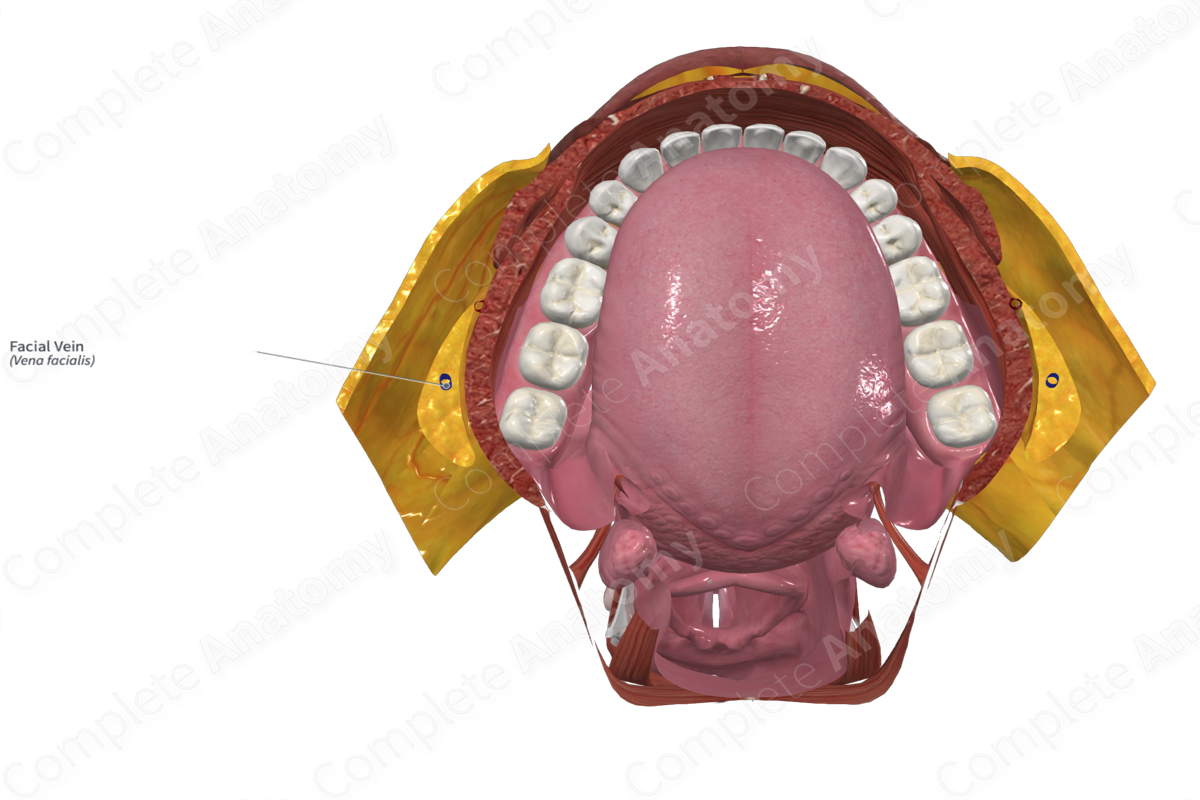
Quick Facts
Origin: Angular vein.
Course: Crosses the anteroinferior angle of the masseter muscle and runs superficial to the submandibular gland to join with the anterior division of retromandibular vein, forming the common facial vein.
Tributaries: Angular, deep facial, superior and inferior labial, external nasal, external palatine, inferior palpebral, submental, parotid, and transverse facial veins. Communicates with the pterygoid plexus of veins and the cavernous sinus.
Drainage: Face, soft palate, tonsils, parotid gland.
Related parts of the anatomy
Origin
The facial vein is a direct continuation of the angular vein that occurs at the approximate level of the inner canthus of the eye. It is usually called the facial vein once below the adjoining level of the superior labial vein.
Course
The angular vein continues as the facial vein, running downwards and backwards behind the facial artery, but with a straighter course. It crosses the anteroinferior angle of the masseter muscle, piercing the deep fascia. It crosses over the submandibular gland and joins the anterior division of retromandibular vein below the angle of the mandible to form the common facial vein. The latter drains into the internal jugular vein.
Tributaries
The facial vein connects with the pterygoid plexus of veins (via the deep facial vein) and with the cavernous sinus (through the pterygoid plexus).
Additional tributaries include the deep facial, superior and inferior labial, external nasal, external palatine, inferior palpebral, submental, parotid, and transverse facial veins.
Structures Drained
Due to its vast number of tributaries, the facial vein drains several structures including the lips, nose, forehead, anterior scalp, tonsils, soft palate, eyelids, parotid and submandibular glands, and the region under the mandible.
List of Clinical Correlates
- Cavernous sinus thrombosis




